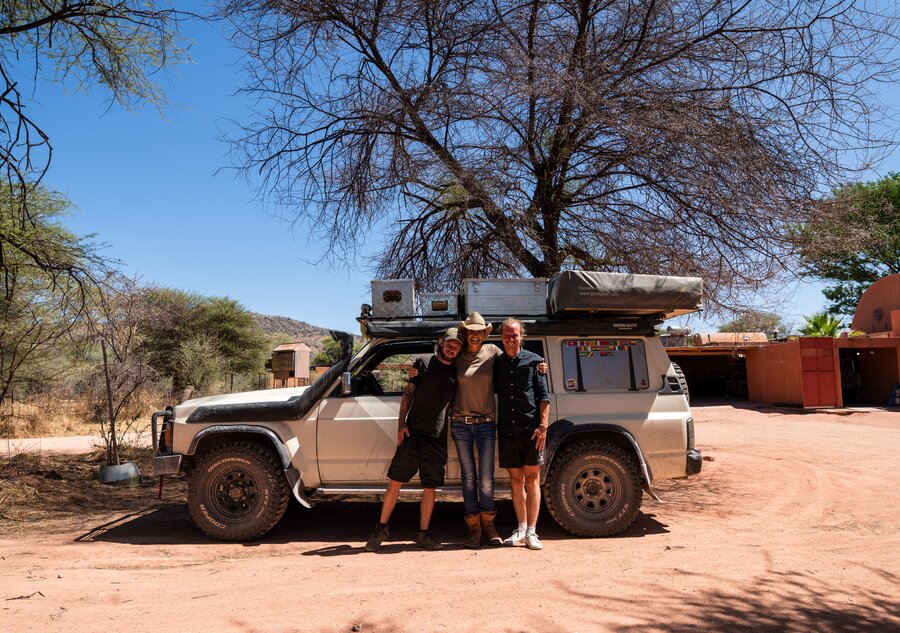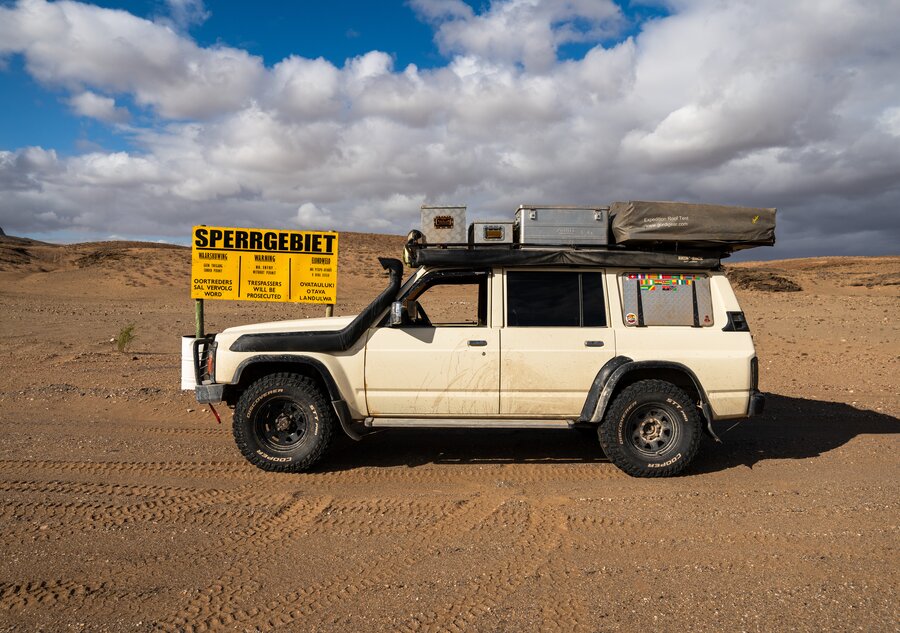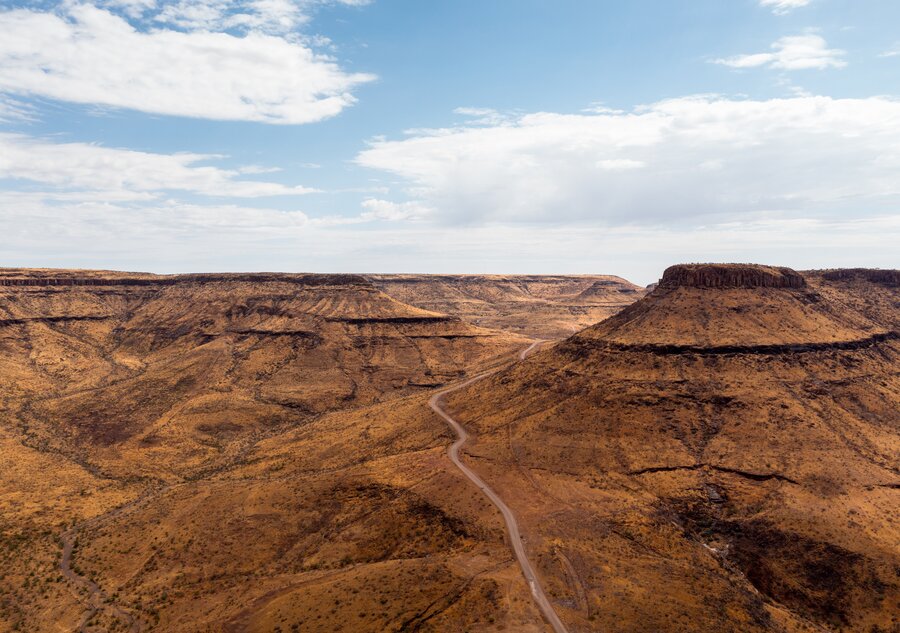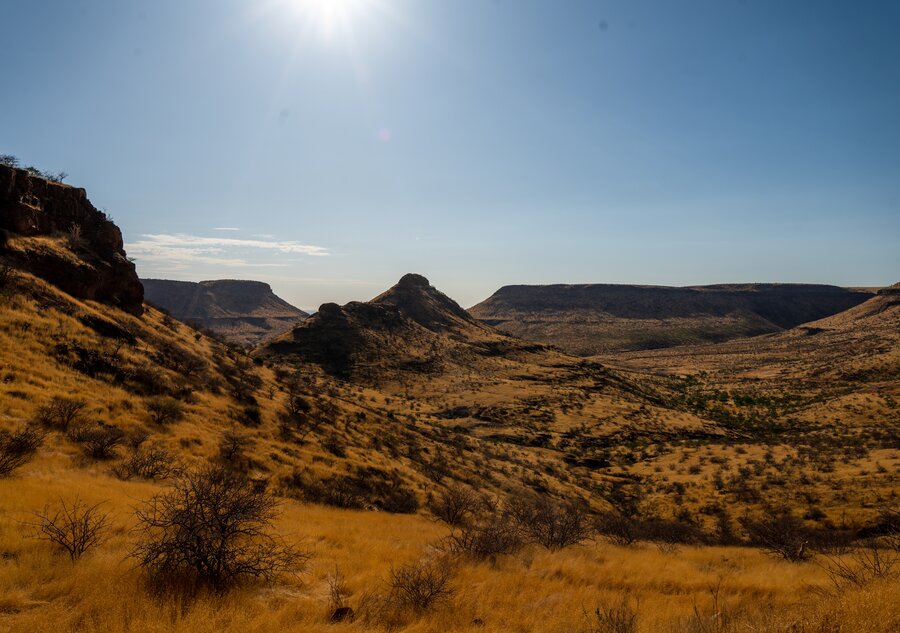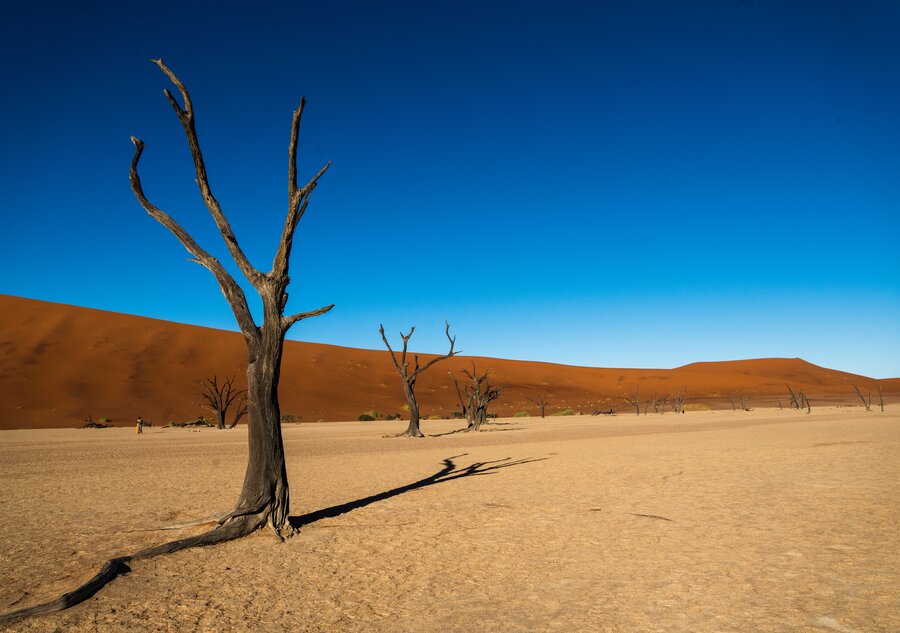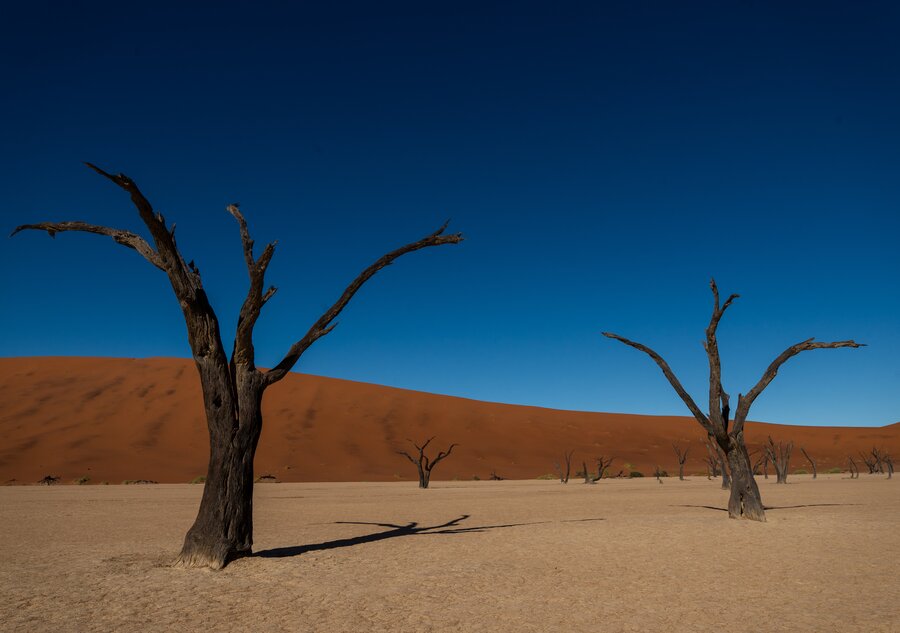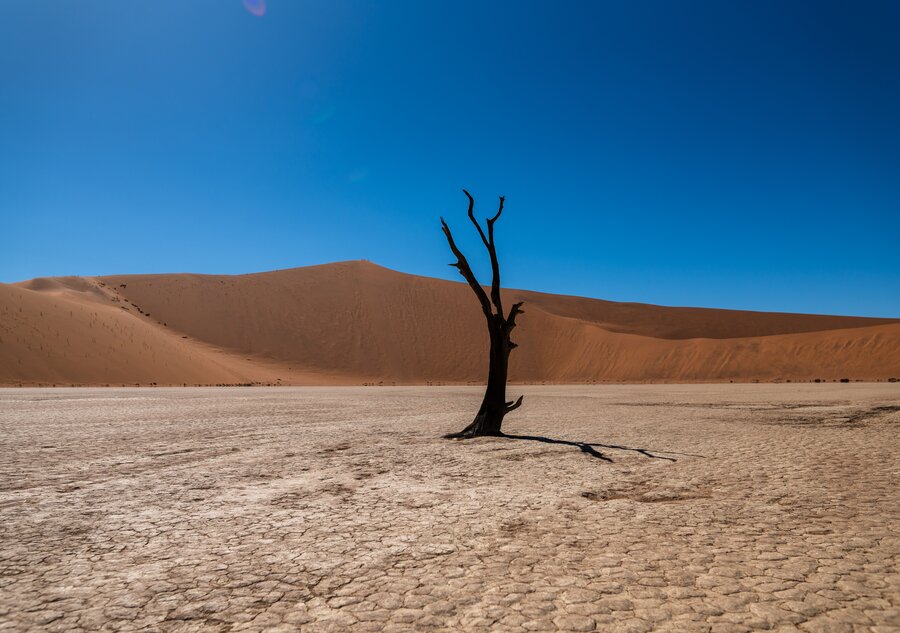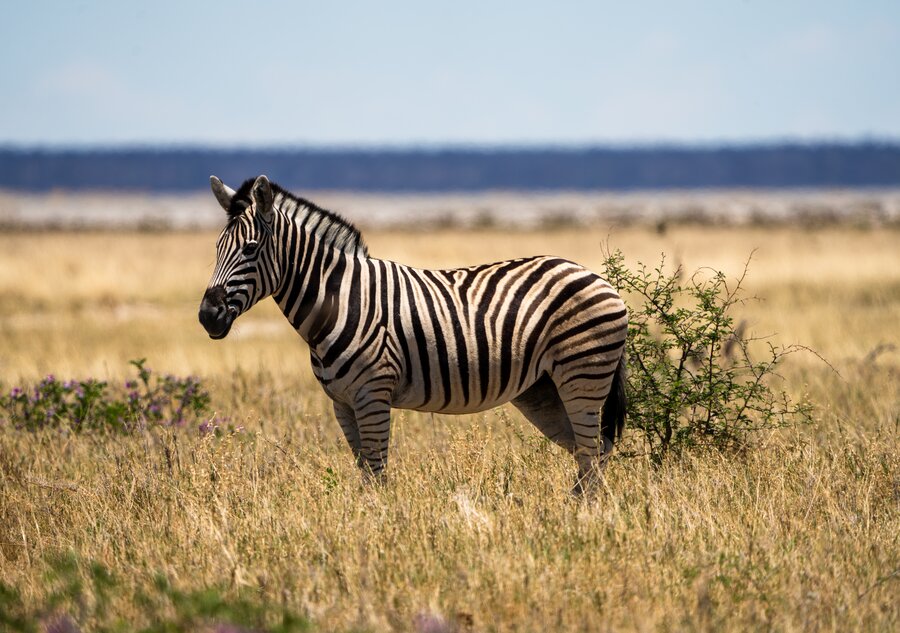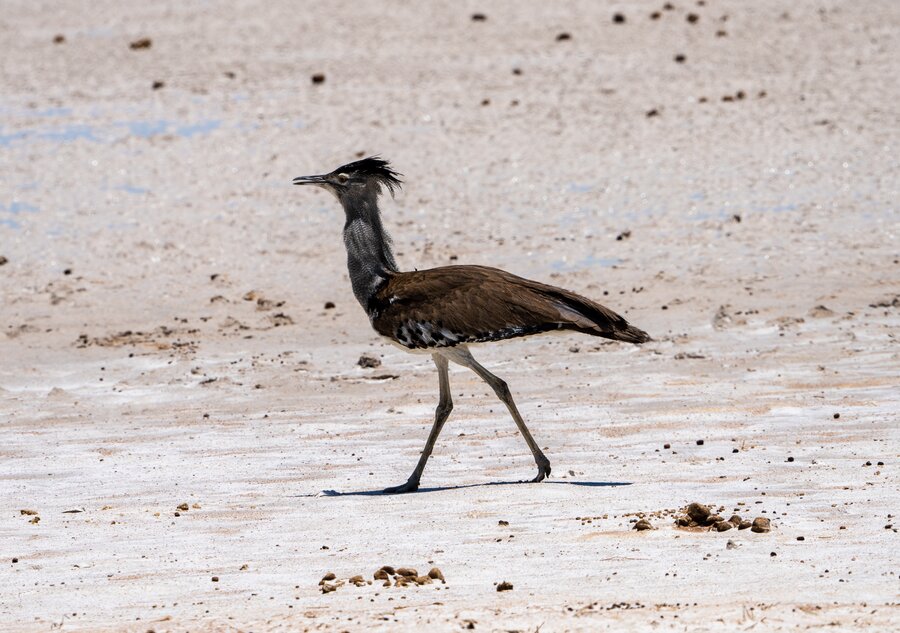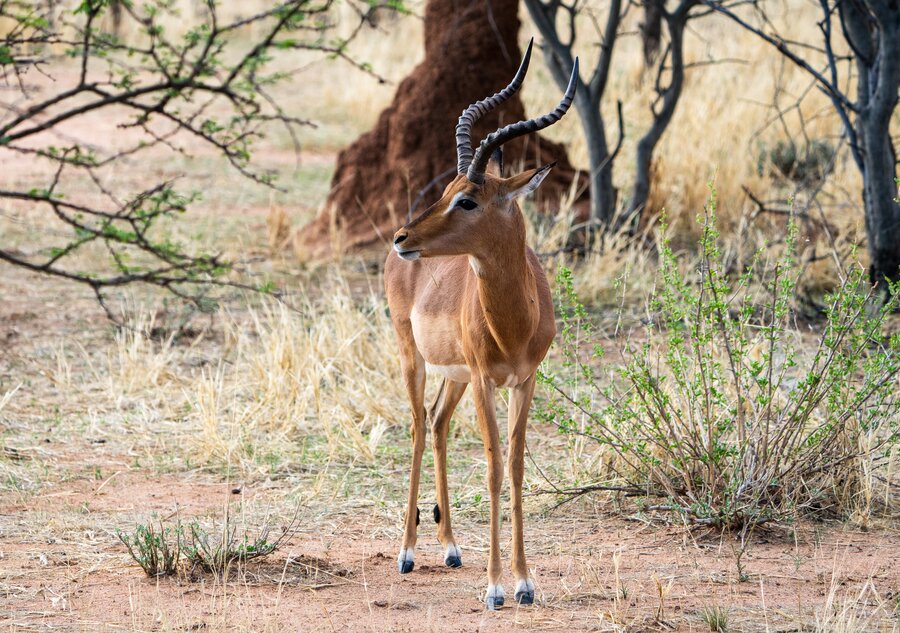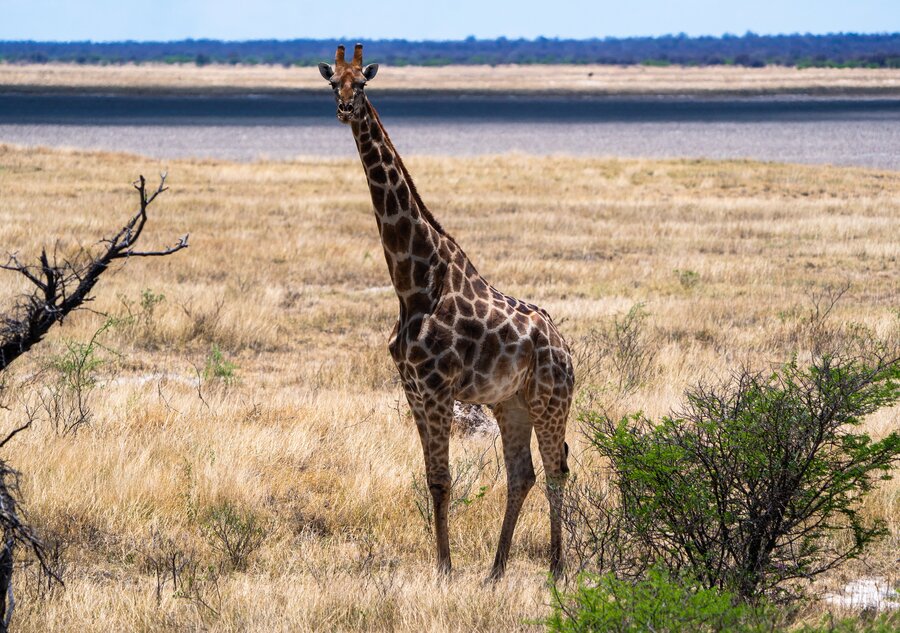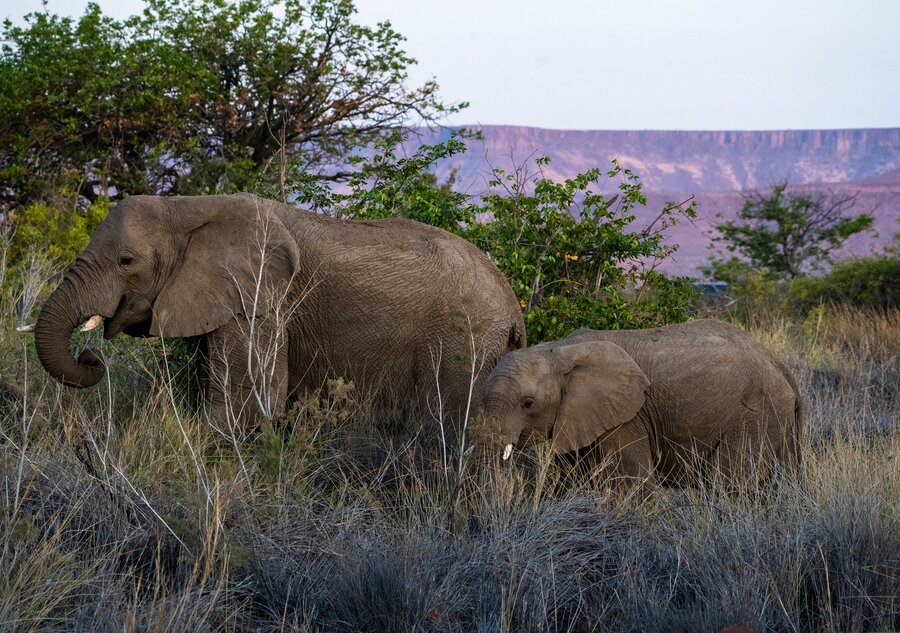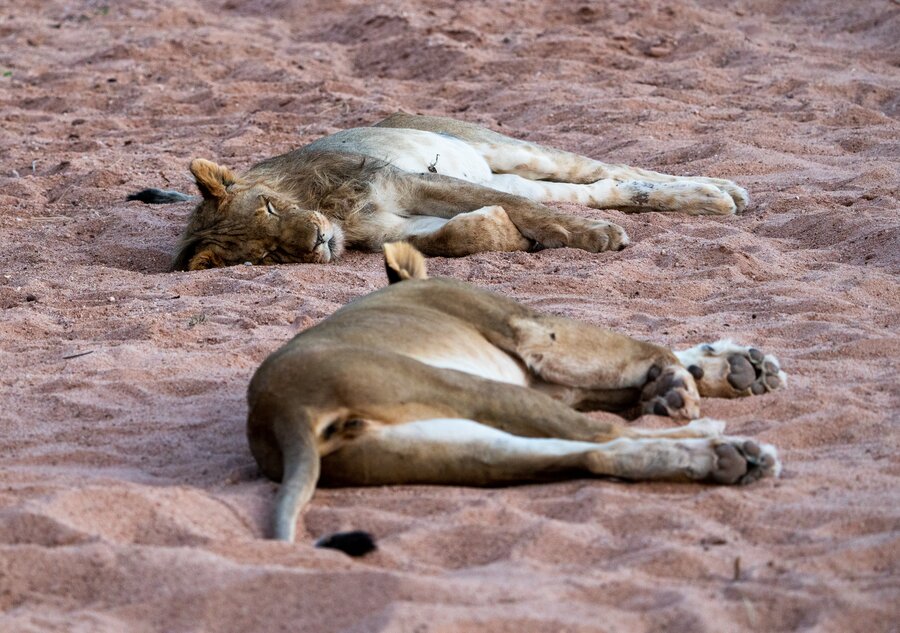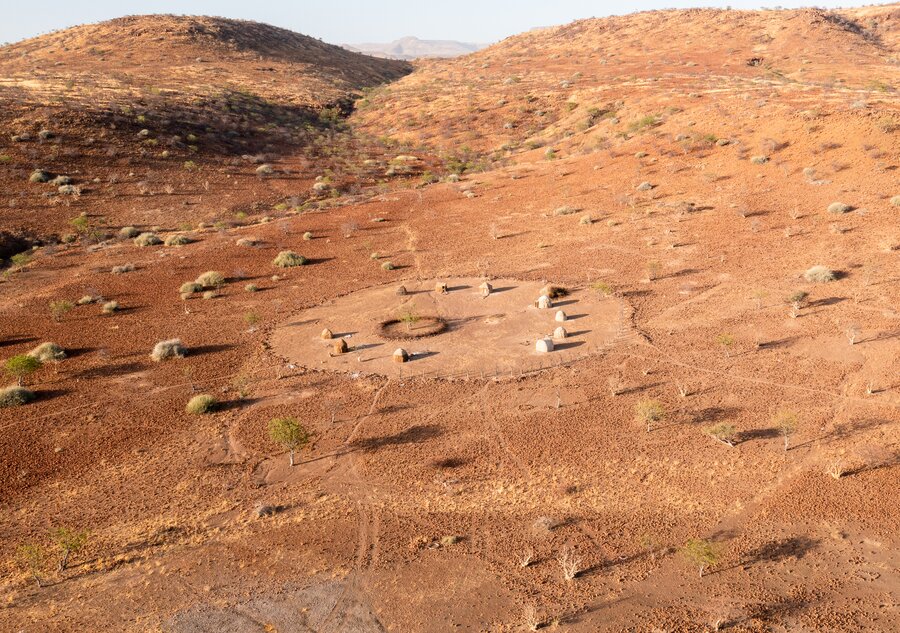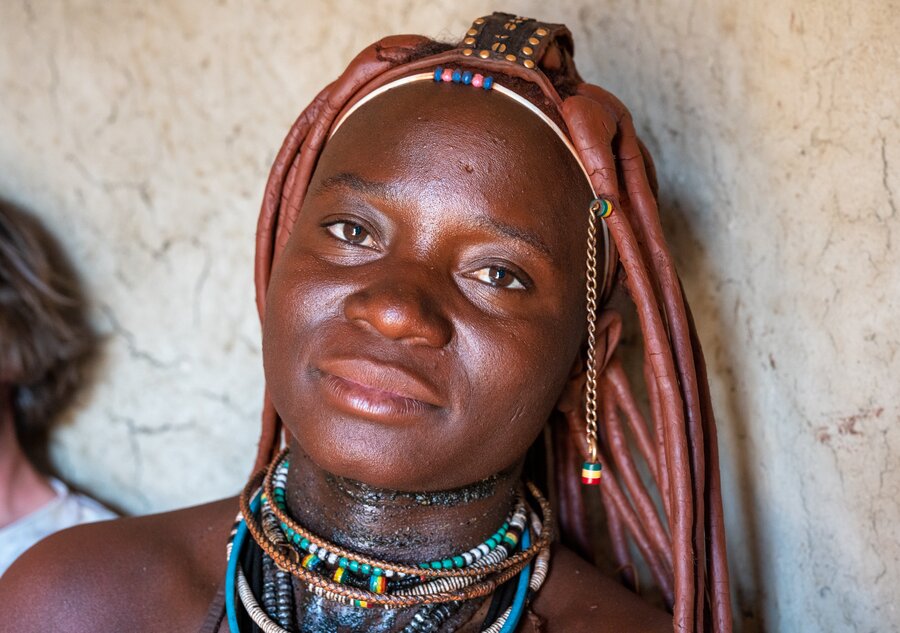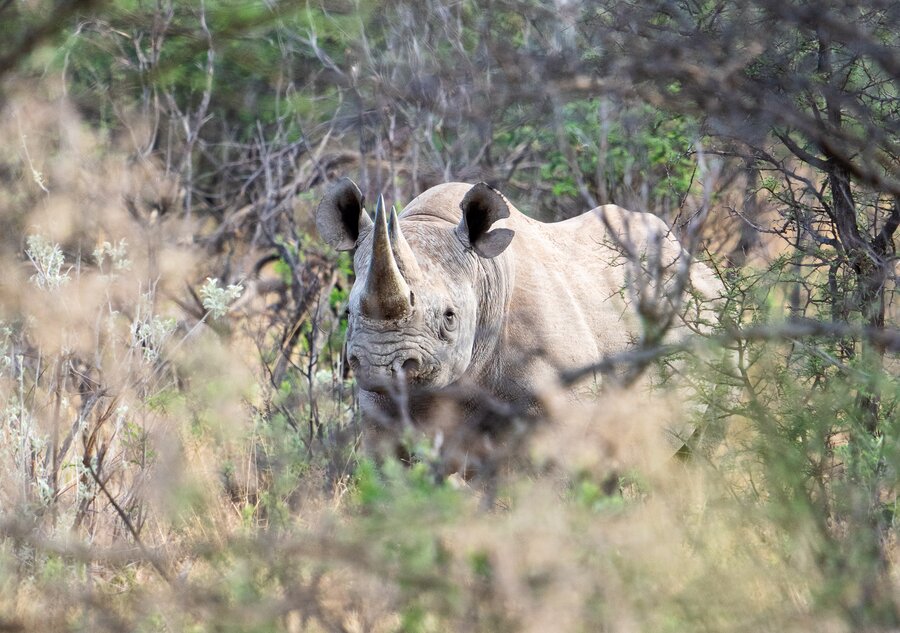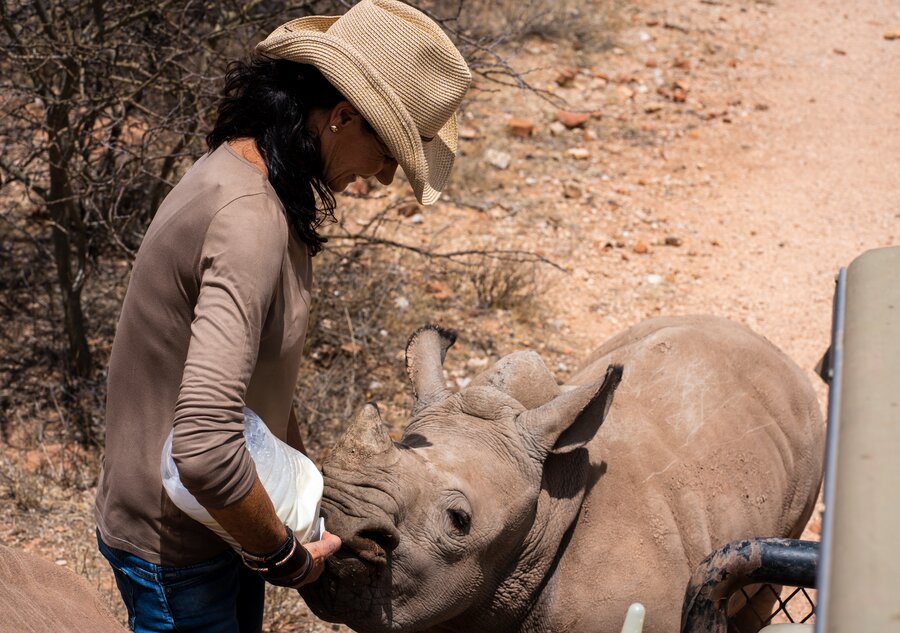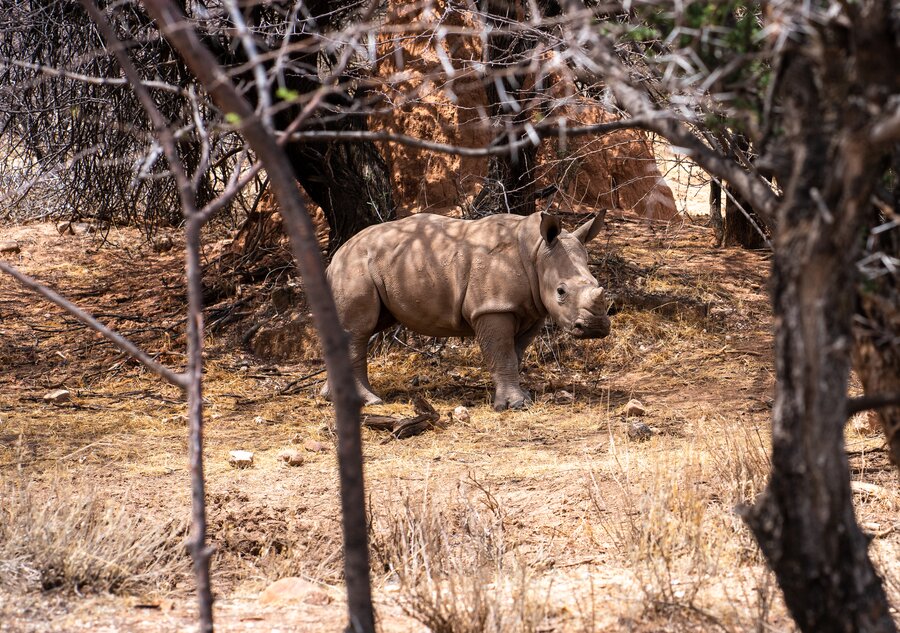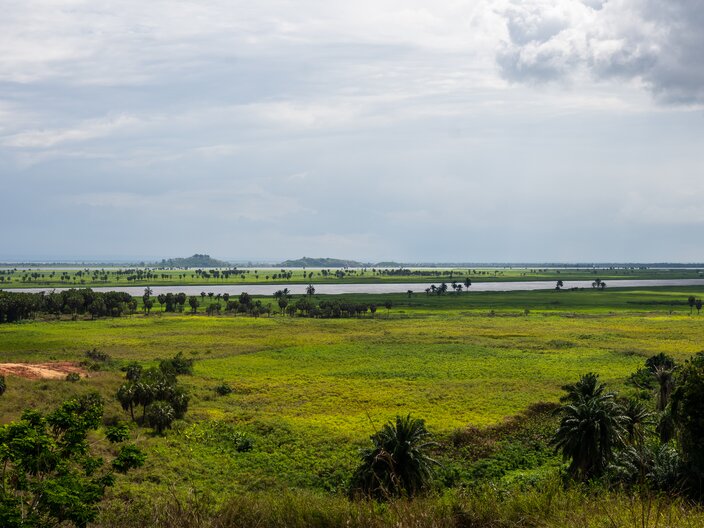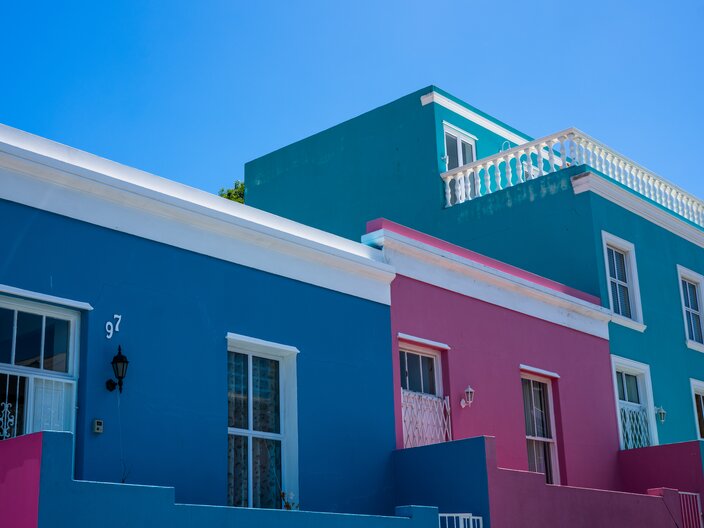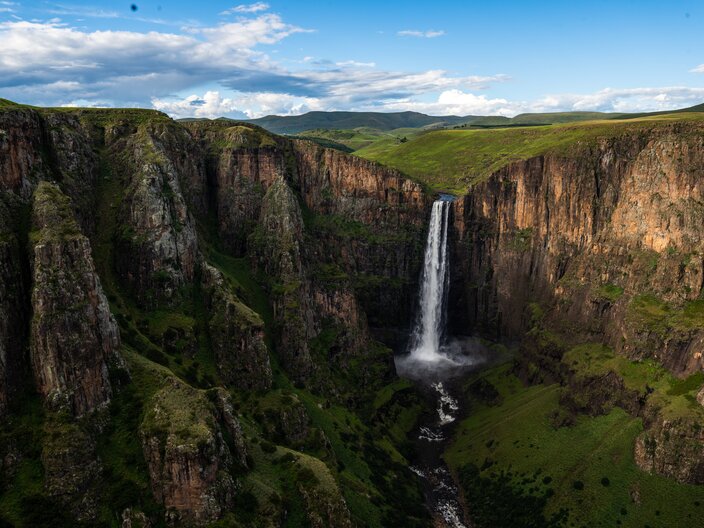Most of Namibia is dry, stony, and partly sandy desert, where rain falls only every few years. Over thousands of years, this arid environment has created a special habitat for unique plants and animals in an unreal landscape. Huge dry canyons run through the country, providing a glimpse of how water-rich this land must once have been.
In the white clay pan of Deadvlei, in the shadow of the largest dune in the world - Big Daddy - trees several hundred years old can be found. Due to the high salt concentration of the soil and the extreme heat, the trees rot particularly slowly. They are witnesses of a once wetter time, when the Tsauchab River still carried water through this area.
Namibia
Namibia is the least densely populated country on the continent. Most of the country is desert or dry savannah and only two rivers carry water all year round - the Kavango in the northeast and the Orange in the south. Namibia is home to traditional African animals as well as some ancient ethnic groups which maintain their ancestral way of life.
Our journey took us from the Kavango,where we experienced our first safari on the continent. We then visited Himba tribes in the Namib desert and continued our way south to the mouth of the Oranje river, enjoying more safaris. This region was formerly restricted due to diamond mining.
During our time here, we learned what the state of Namibia and private individuals are doing to combat rhino poaching and were allowed to learn more about the effects of poaching on this endangered species at a rhino orphan capture center.
Desert country Namibia
Africa out of a picture book - Wildlife
When you think of Africa, its animals come to mind: fascinating, exotic, and astonishing. On our visits to the Bwabwata and Etosha National Parks, for the first time on the African continent, we were treated to hippos, elephants, giraffes, zebras and countless species of birds and antelopes. It was not only exciting to see these animals in the wild, but also to learn experience their natural environments in which they live. We were overwhelmed with childlike curiosity as we spent days and many nights observing these animals.
Visiting the Himba
The Himba are a semi-nomadic tribe that still maintains their traditional way of life. They are distinguished by their reddish skin and the braided hair, which are created and maintained with a special mixture of natural stone and butter fat.
We were allowed to spend two days with the Himba and were introduced to their traditions, their mud and dung huts, as well as how their way of life has somewhat changed due to external influences. Today, their children attend state schools, mobile phones are ubiquitous, and tourism is the most important source of income for many tribes.
We came across the Himba by chance – while we were in the region of Damaraland to visit rhino game keepers - they had never had contact with tourists or white people before. With the help of an interpreter, we managed to communicate and open a window to each other into worlds that seemed very foreign.
On the trail of the rhinos
Two species of rhino can be found on the continent: White and black rhinos. As a species, rhinos are threatened with extinction by man. They are wild, non-domesticated animals which reproduce little or not at all in captivity or even within a confined habitat. In Africa, the largest herds are in huge reserves or national parks. They are mercilessly hunted and generally slaughtered for their horns which are highly prized for their medicinal properties, especially in Asia. However, the death of the animals could be avoided, as the horns grow back.
In Namibia, the national parks are guarded by rangers. We visited the "Save the Rhino Trust", which is a state-recognized NGO whose mission is to protect the rhinos, train rangers and engage with the local population in the protection. The organization creates jobs, which means that the local population no longer depends on poaching to survive. It is important to understand that rhino horns yield a price per kilo of several tens of thousands of dollars, providing a tempting and lucrative revenue, particularly if you have no other source of income.
In addition to the state national parks, there are privately managed reserves that are home to rhinos, as well as other wildlife. One of them is run by the "rhino whisperer" Annette Oelofse. We visited her because of her unique work with orphan rhinos, most of which lose their mothers through poaching. From all over Namibia and the neighboring countries, the very young and traumatized orphans are brought into Annette's care. She takes care of their upbringing and is responsible for their later release into the wild.
She allowed us to join her at one of the many daily feedings. An extraordinary and unique experience. Not only seeing these beautiful little rhinos up close was very impressive, but also being able to observe and especially feel this deep and natural connection of Annette with the orphans 3as deeply moving.




